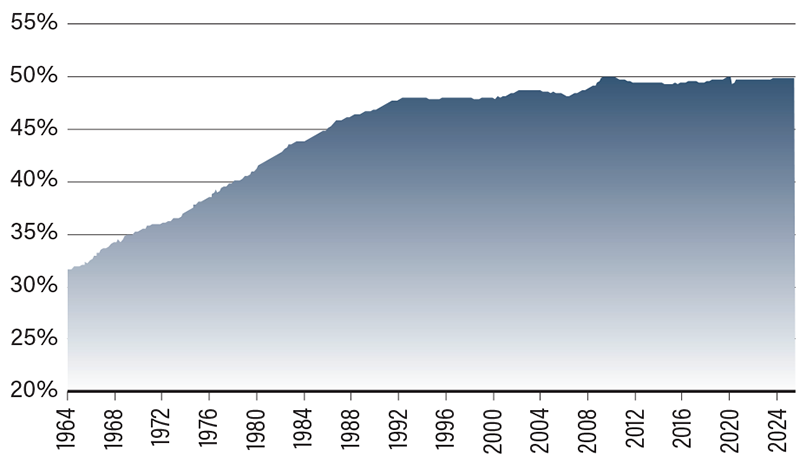Uncovering Hidden Flaws in 250 Years of US Worker Data

Looking back at the 250-year history of the United States, The Wall Street Journal recently published a report declaring that Americans today “earn more, work fewer hours and are more likely to hold a service job than ever before.” Statistically that’s true—but economic realities often hide behind the averages. What does “earning more” mean when household spending has transformed so dramatically? Has working less improved well-being or productivity? In this Financial Feature, we turn to economic analysis to find out.
The Wall Street Journal reports that annual earnings, adjusted to 2025 dollars, rose from $15,593 in 1890 to $63,914 in 2023—an apparent 400% increase. But that comparison is misleading for two reasons. The authors report that the 1890 figure represents an average, while the 2023 figure is a median—a crucial distinction in a world where income distribution doesn’t fall on a bell curve. Economically, the two numbers aren’t comparable because what gives income meaning is spending structure. In 1890, households didn’t pay for phones, internet or higher education/trade training. Today, these are essential expenses just to participate in the labor market. The Journal rightly notes America’s shift from agriculture to manufacturing and then to services but overlooks how that shift also transformed the basket of consumption and the price of employability.
Another claim—that Americans now work fewer hours, down from 58.5 in 1890 to 34.2 today—misses crucial context. The 1890 breadwinner who worked long hours often came home to a clean house and a cooked meal. Today’s 34-hour worker, by contrast, typically returns to unpaid chores and errands, often shared between two earners. About a quarter of today’s workers are married women who, like their spouses, put in hours both at the office and at home. In short, total working time—paid and unpaid—might not have fallen as statistics suggest, especially when two full-time earners (68 weekly work hours in total) in one household now replace one (58.5 hours) from 1890. Can we really claim that Americans work less today?
The point isn’t that life hasn’t improved; it has, in countless ways. But comparing statistics from hundreds of years ago, even with inflation adjustments, is misleading at best.
Women of All Marital Statuses Make Up Half of US Workers

SOURCE: Federal Reserve Bank of St. Louis.
